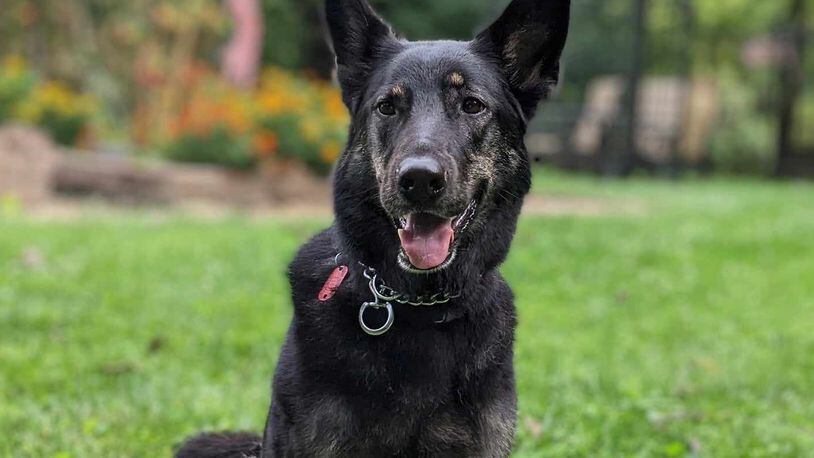“He sounds a little like Janie,” Christy responded to Teddy’s rasp.
“Really?” I said half in disbelief and half hoping maybe we had a diagnosis.
Janie is Christy and her husband Ben’s approximately 5-year-old German Shepard they adopted from the Greene County Animal Control in 2021. The loyal pup’s name honors Christie’s mom, Beverly Jane, and Ben’s mom, Bettie Jane.
This past December, out of nowhere, Janie started hacking, sneezing, almost gasping as if she had something caught in her throat. These episodes started occurring about two to three times a day with each one lasting about 10 seconds.
Christy and Ben, both veteran German Shepard owners, were accustomed to canine sounds such as weighty breathing, sniffing and snorting — all of which dogs typically exhibit as they maneuver in the world around them.
Christy was alarmed the first time Janie had one of these attacks. It was not something she had ever heard from her past dogs. The dog sounded distressed.
Janie’s vet examined her heart and lungs to check for respiratory issues. Everything was fine and the still-playful pooch was sent home with an antibiotic.
After about three weeks, Janie’s episodes had lessened but then they started again with the same intensity as before.
For the third vet visit, Christy suggested to Ben that he take a video of Janie during one of her episodes. One look at the video and the vet diagnosed the problem as “reverse sneezing.”
Shelby Loos, a veterinarian on petmed.com, describes reverse sneezing or “backward sneeze” as “a sudden, involuntary respiratory reflex. It can occur if a dog’s soft palate (the soft part of the roof of the mouth that separates the nasal passage from the oral cavity) becomes irritated.”
Reverse sneezing can occur in any breed but may be more common in brachycephalic dogs or flat‑faced dog breeds with shorter facial bones and muzzles. These breeds include Boxers, French Bulldogs, Boston Terriers, Chow Chows, Pugs and Cavalier King Charles Spaniels.
“Occasional episodes of reverse sneezing are generally considered normal and not a health concern. While not a medical emergency, any instances of reverse sneezing and how frequently it happens should always be discussed with your vet. Additionally, if your dog is experiencing other respiratory symptoms such as coughing, nasal discharge, choking or trouble breathing, seek immediate veterinary care,” Loos said.
That vet gave Christy and Ben two treatment options: Put the dog on steroids and possibly do an MRI to check the nasal passages or take a “wait and see” approach. They choose the latter. As of early March, Janie hasn’t had any more episodes.
Concerning Teddy, we followed Christy’s suggestion and took a video of one of Teddy’s episodes. His vet ruled out reverse sneezing and is leaning toward asthma or bronchitis. She’ll be testing him in a week to verify her suspicions.
Karin Spicer is a member of The Dog Writers Association of America. She lives with her family and two furry animals who inspire her. She can be reached at spicerkarin@gmail.com.
Causes of reverse sneezing
1. Rapid air intake
2, Normal changes in breathing patterns
3. Environmental irritants
4. Pressure to the dog’s airway
5. Exercise or over-excitement
About the Author
